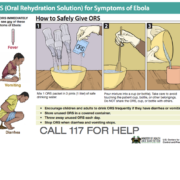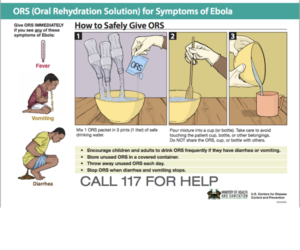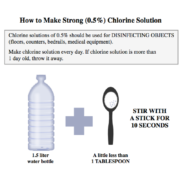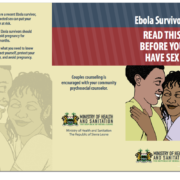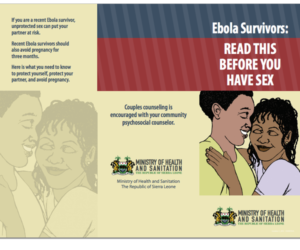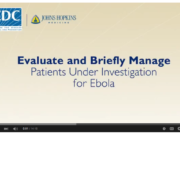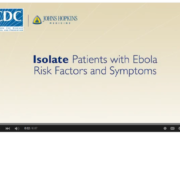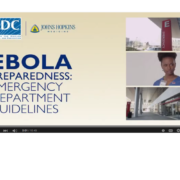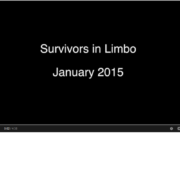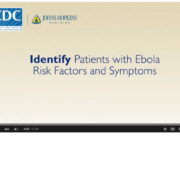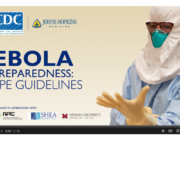How to Make Strong (0.5%) Chlorine Solution
/in Illustration CDC Sierra Leone English Infection Control General Public /by Marla Shaivitz | Health Communication Capacity CollaborativeResource Type(s)
Topic(s)
Audience(s)
Language(s)
Country(ies)
Source(s)
Ebola Survivors: READ THIS BEFORE YOU HAVE SEX
/in Brochure Ministry of Health and Sanitation The Republic of Sierra Leonne Sierra Leone English Sexual Activity, Survivors /by Marla Shaivitz | Health Communication Capacity CollaborativeResource Type(s)
Topic(s)
Language(s)
Country(ies)
Evaluate and Briefly Manage Patients: Ebola Assessment Hospitals
/in Video CDC, Johns Hopkins Medicine United States English Signs and Symptoms Health Care Workers /by Marla Shaivitz | Health Communication Capacity CollaborativeThis module covers the basic concepts for evaluating and briefly managing a patient under investigation for Ebola. Although all U.S. healthcare facilities need to screen and promptly identify patients at risk for Ebola, the content of this module is primarily for Ebola Assessment Hospitals. These hospitals need to be capable of initial evaluation and care of these patients for up to 96 hours until Ebola testing is complete and a diagnosis of Ebola is confirmed or ruled out. Plans should be developed and practiced for safely transporting patients within the facility, designating and preparing a patient room and adjacent spaces to be used by staff, training staff on the use of personal protective equipment, laboratory safety, communications, and environmental infection control and waste management, among other topics. Public health authorities should be consulted promptly for additional information and guidance, and to facilitate transfer of the patient to an Ebola Treatment Center, if necessary.
Resource Type(s)
Topic(s)
Audience(s)
Language(s)
Country(ies)
Source(s)
Isolation of a Patient with Ebola Risk Factors and Symptoms
/in Video CDC, Johns Hopkins Medicine United States English Signs and Symptoms Health Care Workers /by Marla Shaivitz | Health Communication Capacity CollaborativeThis module provides guidance to frontline and assessment hospitals for developing plans and procedures for safely implementing appropriate isolation precautions for a patient under investigation for Ebola. The module is focused on the emergency department, which is the likely first point of contact. Planning and adhering to these precautions will minimize the risk of infecting patients, staff, and visitors while these patients are evaluated. The module also outlines guidance for coordinating with public health authorities during the evaluation of patients under investigation for Ebola.
Resource Type(s)
Topic(s)
Audience(s)
Language(s)
Country(ies)
Source(s)
Considerations for Preparedness
/in Video CDC, Johns Hopkins Medicine United States English Preparedness Health Care Workers /by Marla Shaivitz | Health Communication Capacity CollaborativePlanning and preparedness are the keys to dealing effectively with threats that include infectious diseases caused by SARS and the Middle East Respiratory Syndrome or MERS, novel influenza viruses like H1N1, and Ebola. During outbreaks or epidemics of these emerging infectious diseases, healthcare facilities must carefully monitor the global situation as it evolves and conduct robust planning to promptly identify and safely manage a patient who may be infected and prevent further transmission. This module focuses on preparedness considerations for Ebola and how to engage a multi-disciplinary team to prepare your institution. Planning, preparedness, and practice will protect patients, visitors, and staff.
Resource Type(s)
Topic(s)
Audience(s)
Language(s)
Country(ies)
Source(s)
WHO: Survivors in Limbo
/in Video World Health Organization Sierra Leone English Stigma, Survivors General Public /by Marla Shaivitz | Health Communication Capacity CollaborativeSierra Leone has more than 2000 known Ebola survivors, who have been celebrated as heroes all over the country. But once back in the community, they face the harsh reality of stigmatization. As a young boy and orphan, Sherrie used to live with his uncle, until he was discharged from the Ebola treatment centre and he found that he wasn’t welcome back in his own home. Inspired by strength and courage, Sherrie and a few other survivors have created “the Rescue Team”, an association of Ebola survivors. The association already has more than 90 survivors from Port Loko district alone, the majority of whom are young adults.
Resource Type(s)
Audience(s)
Language(s)
Country(ies)
Source(s)
Screening Patients for Ebola Risk Factors and Symptoms
/in Video CDC, Johns Hopkins Medicine United States English Signs and Symptoms Health Care Workers /by Marla Shaivitz | Health Communication Capacity CollaborativeHealthcare facilities that provide urgent care and emergency services are first points of contact for returning travelers who might have Ebola. This module provides guidance to emergency departments for developing plans and procedures for screening all patients for relevant travel history, risk factors for Ebola, and signs and symptoms that might be consistent with Ebola. Important concepts are outlined regarding safe, patient- and family-centered screening procedures that can appropriately diagnose and manage Ebola or other illnesses while ensuring respect for the patient and protection of the patient’s privacy throughout the screening process.
Resource Type(s)
Topic(s)
Audience(s)
Language(s)
Country(ies)
Source(s)
How to Safely Put on PPE, Selected Equipment: N95 and Gown
/in Video CDC, Johns Hopkins Medicine United States English Infection Control, PPE Health Care Workers /by Marla Shaivitz | Health Communication Capacity CollaborativeThis video demonstrates the procedure described in CDC guidance for donning (i.e., putting on) personal protective equipment (PPE) for all healthcare providers entering the room of a patient hospitalized with known or suspected Ebola virus disease. It assumes the healthcare provider will be using an N95 and Gown.
Resource Type(s)
Topic(s)
Audience(s)
Language(s)
Country(ies)
Source(s)
How to Safely Put on PPE, Selected Equipment: PAPR and Coverall
/in Video CDC, Johns Hopkins Medicine United States English Infection Control, PPE Health Care Workers /by Marla Shaivitz | Health Communication Capacity CollaborativeThis video demonstrates the procedure described in CDC guidance for donning (i.e., putting on) personal protective equipment (PPE) for all healthcare providers entering the room of a patient hospitalized with known or suspected Ebola virus disease. It assumes the healthcare provider will be using a PAPR and Coverall.
Resource Type(s)
Topic(s)
Audience(s)
Language(s)
Country(ies)
Source(s)

The Ebola Communication Network was originally developed by the Health Communication Capacity Collaborative (Cooperative Agreement #AID-OAA-A-12-00058) and expanded under Breakthrough ACTION (Cooperative Agreement #AID-OAA-A-17-00017) both under the leadership of Johns Hopkins Center for Communication Programs. This website is now maintained by Johns Hopkins Center for Communication Programs and its contents are the sole responsibility of CCP. The contents of this website do not necessarily reflect the views of USAID, the United States Government, or Johns Hopkins University.

